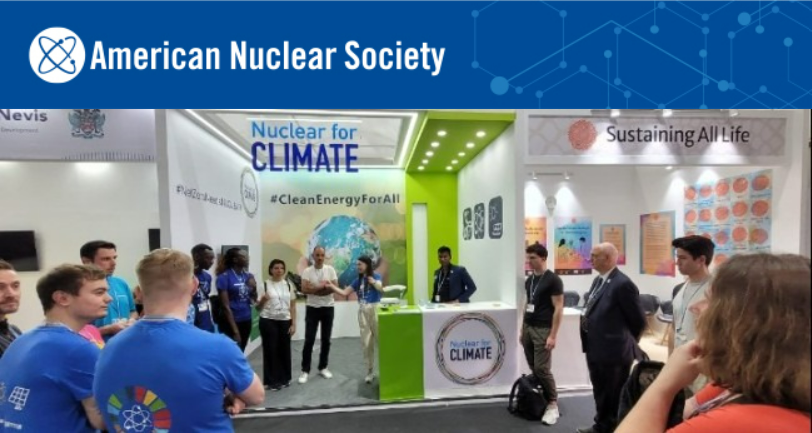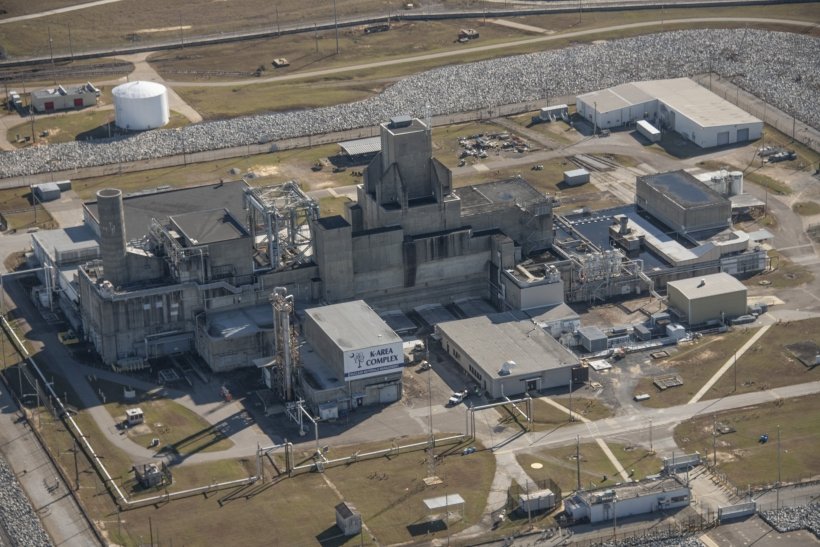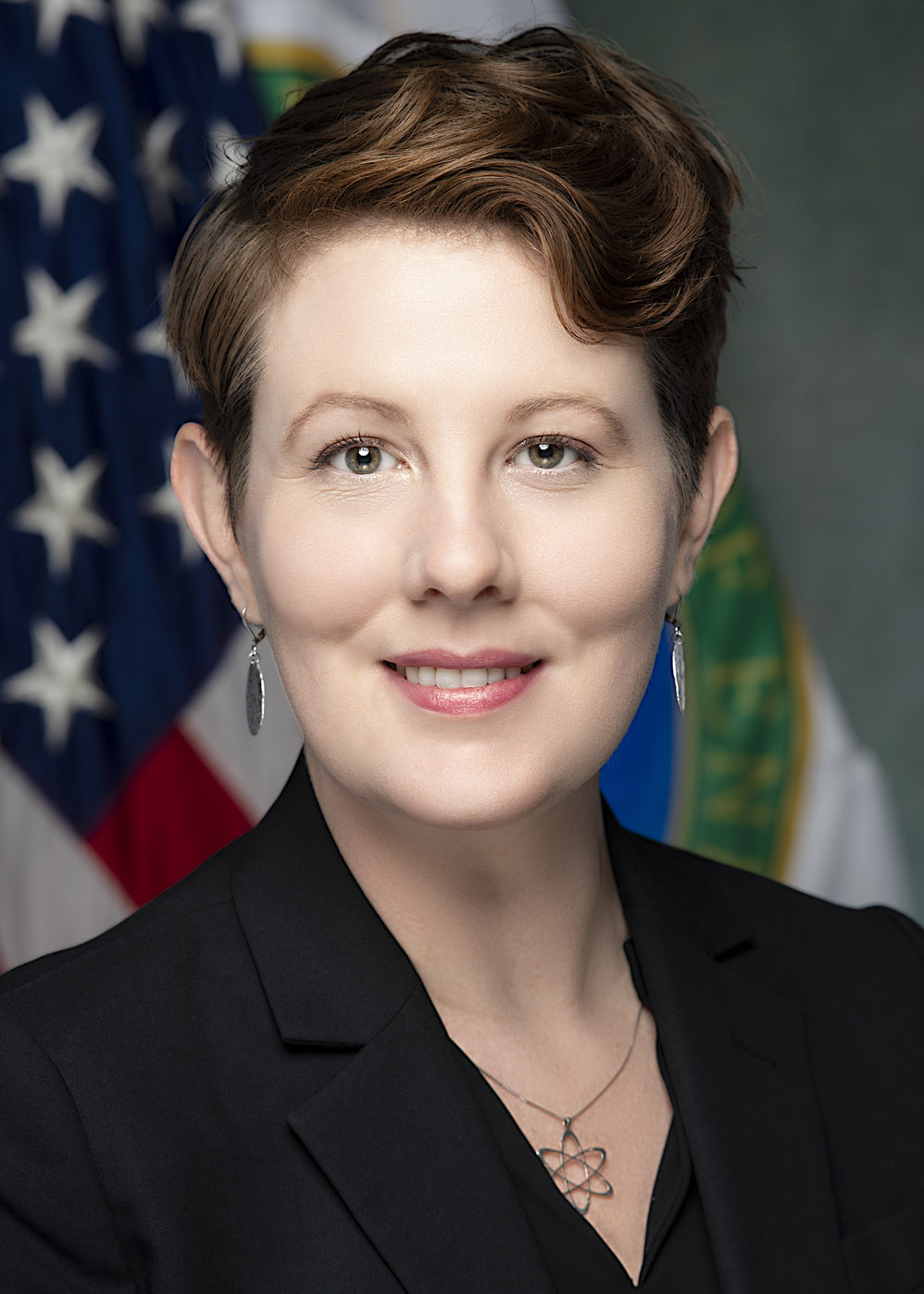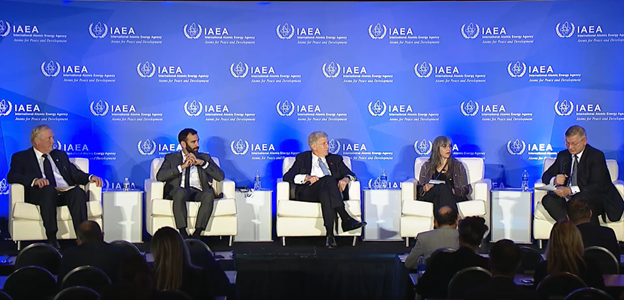A Northrop Grumman Antares rocket, with the Cygnus spacecraft Sally Ride aboard (so named for first American woman to fly in space), launched at 5:32 a.m. EST on November 7, from NASA's Wallops Flight Facility in Virginia. The rocket is captured just after liftoff in this still image from NASA’s live broadcast of the event.
Seeds from the joint laboratories of the International Atomic Energy Agency and the Food and Agriculture Organization of the United Nations (FAO) are onboard a Cygnus spacecraft launched from NASA’s Wallops Flight Facility in Virginia early on November 7. Now orbiting the Earth en route to the International Space Station, the seeds are part of a commercial resupply mission with a payload that includes resources to support more than 250 scientific investigations.
A screenshot from the Local 12 report. (Image: WKRC/Sinclair)
In May 2019, Zahn’s Corner Middle School in Pike County, Ohio, located within four miles of the former Portsmouth Gaseous Diffusion Plant (PORTS), was closed after local officials reported enriched uranium and transuranic radionuclides were detected inside the school and at outside air monitors.
Now, Cincinnati’s WKRC Local 12, a news affiliate of Sinclair Broadcast Group, is reporting that a private house in Lucasville, Ohio, 10 miles from the PORTS site, has been contaminated with enriched uranium.
Attendees at the Nuclear for Climate booth during the COP27 conference.
COP27, the 2022 United Nations climate change conference, is under way this week in Sharm el-Sheikh, Egypt. A delegation from the American Nuclear Society has traveled there to participate in Nuclear for Climate’s #NetZeroNeedsNuclear advocacy campaign. Nuclear for Climate, cofounded by ANS, is a grassroots organization made up of nuclear professionals and scientists from over 150 associations worldwide.
Curie and Meitner (Photos: Wikicommons)
Marie Curie was born in Warsaw in 1867 on this day, 155 years ago. Exactly 11 years later, in 1878, Lise Meitner was born in Vienna. November 7 is also the date when, in 1911, the Swedish Royal Academy of Science decided to award Curie a second Nobel Prize for her 1898 discovery of the elements radium and polonium (coincidentally, her 44th birthday). Curie, who at age 36 had shared the 1903 Nobel Prize in Physics with her husband, Pierre Curie, and Henri Becquerel, later accepted the chemistry prize on December 10, 1911. She remains to this day the only person—man or woman—to receive two Nobel Prizes in two different fields of science. (Linus Pauling was also awarded Nobel Prizes in two categories: chemistry and peace.) On this unofficial day of women in nuclear science, let’s take a moment to acknowledge the fundamental discoveries of both Curie and Meitner.
A view of Savannah River’s K Area, where employees began downblending plutonium in 2016. (Photo: DOE)
Contractor employees at the Department of Energy’s Savannah River Site in South Carolina recently exceeded their plutonium downblending goal for 2022 ahead of schedule as part of the ongoing activities to remove Pu from the state, the DOE’s Office of Environmental Management (EM) announced.
From left: Kimberly Cook-Nelson, John Dinelli, and Bill Maguire. (Photos: Entergy)
New Orleans-based Entergy Corporation yesterday announced changes to its senior leadership, including the selection of Kimberly Cook-Nelson as executive vice president and chief nuclear officer, replacing Chris Bakken.
Cook-Nelson, Entergy’s first female CNO, will be based in Jackson, Miss., the company’s nuclear operations headquarters. She joined Entergy in 1996 as a design engineer at the Waterford nuclear plant in Killona, La., rising to general manager of plant operations in 2011. Most recently, she held the position of chief operating officer, nuclear operations. (In addition to the Waterford facility, Entergy owns and operates Arkansas Nuclear One in Russellville, Ark., Grand Gulf in Port Gibson, Miss., and River Bend in St. Francisville, La.)
Nicholas Spivey, left, an SRNL mechanical engineer, and Kurt Gerdes, director of EM’s Office of Technology Development, use virtual reality simulation of an EM worksite during meetings held at the IHMC in Pensacola, Fla. (Photo: DOE)
For the first time since forming in 2020, more than 40 members of a Department of Energy team met in person to evaluate technologies, including exoskeletons and wearable robotic devices, that could be adapted to the cleanup mission of department’s Office of Environmental Management (EM), helping improve the safety and well-being of its workers.
Participating in the forum were (from left) John Hopkins (NuScale Power), Renaud Crassous (EDF), Daniel Poneman (Centrus Energy), Adriana Cristina Serquis (CNEA), and Boris Schucht (Urenco).
The nuclear industry leaders assembled in Washington, D.C., last week to discuss small modular reactor supply chains agreed that lost generation capacity from the expected retirement of hundreds or thousands of coal power plants over the next decade—a cliff, in one panelist’s words—represents an opportunity that developers of SMRs and advanced reactors are competing to meet.
“I think in total 80 projects are ongoing,” said Boris Schucht, panel moderator and chief executive officer of Urenco Group, as he opened the forum. “Of course not all of them will win, and we will discuss today what is needed so that they can be successful.”
Sesuvium portulacastrum (Photo: David Eickhoff/Wikicommoms)
The authors of a study that was recently published in Advances in Agriculture have recommended that the plant Sesuvium portulacastrum, commonly known as sea purslane, “be cultivated in [cesium]-contaminated soils and near nuclear power plants for phytoremediation.” The researchers found that S. portulacastrum is a “hyper-accumulator” of radioactive cesium isotopes, which are byproducts of nuclear fission reactions in nuclear reactors. The study results suggested that these plants could efficiently remove the toxic metallic chemicals from contaminated soil around nuclear facilities.
Constellation Energy's Clinton nuclear power plant. (Photo: NRC)
Constellation Energy, owner and operator of the nation’s largest reactor fleet, will ask the Nuclear Regulatory Commission to extend the operating licenses of the Clinton and Dresden reactors by 20 years, the company announced Monday, adding that it expects to file license applications with the agency in 2024.
One of two cases that display the impressive belt-buckle collection.
Collecting belt buckles from nearly every nuclear power plant in the U.S. wasn’t the goal for Don Hildebrant when he obtained his first one. Over time, it just turned out that way.
One day years ago, Hildebrant came across a buckle from the nuclear plant where he worked, and it seemed before he knew it, he had collected more than 250 of them—some from plants that were never even completed. “When you look at the collection, you will see an interesting story of where nuclear power has been, and how far it has come,” he said.




.png)











.jpg)



